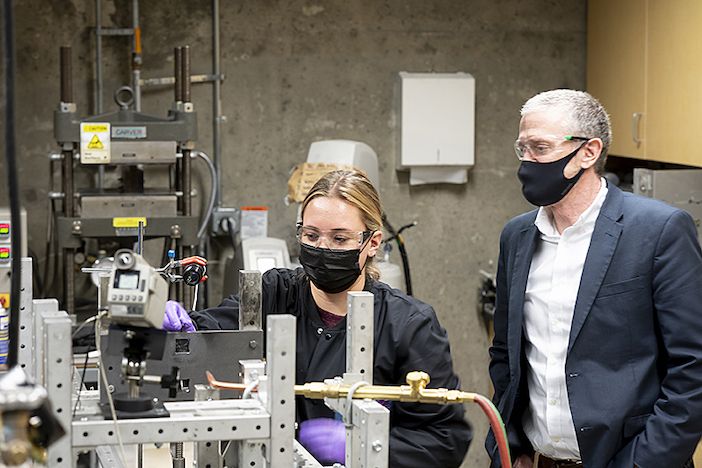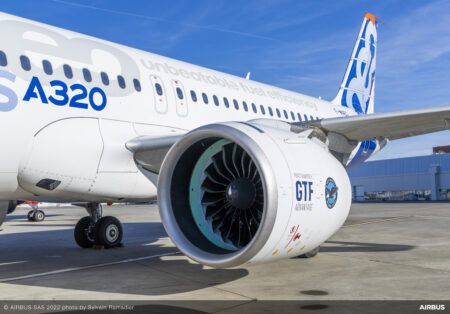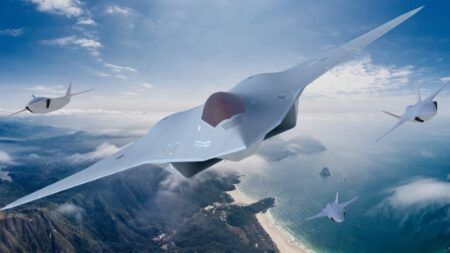Purdue University in Indiana, USA has broken ground on a new hypersonics research facility and announced that it will include a center focused on developing high-temperature materials and new manufacturing processes.
The Hypersonics Advanced Manufacturing Technology Center (HAMTC) will be located in the planned 65,000-square-foot Hypersonics and Applied Research Facility (HARF), which broke ground in late 2021.
In addition to HAMTC, the US$41 million HARF facility will house the only Mach 8 quiet wind tunnel in the world and the hypersonic pulse (HYPULSE) reflected shock/expansion tunnel. The tunnels recreate different scenarios, such as spacecraft re-entry or missile flight through the atmosphere, as well as replicating unique engine conditions for extremely high-speed propulsion.
Industry partners on HARF include GE Additive, Dynetics, Lockheed Martin, Aerojet Rocketdyne, GE Edison Works, Boeing and several small businesses, who will work on materials and manufacturing innovations and have access to testing capabilities at Purdue.
Air resistance at hypersonic speeds (more than 5 times the speed of sound) creates extremely hot temperatures, causing surface level reactions that break down materials.
“When you heat up 3,000 degrees Fahrenheit, small differences in expansion can cause large stresses between components made of different materials that may result in failure of hypersonic vehicles,” said Michael Sangid, executive director of HAMTC and the Elmer F. Bruhn Professor of Aeronautics and Astronautics. “At HAMTC, we can essentially increase the temperature capabilities of materials via new compositions, create new manufacturing routes to produce complex geometrical designs, and join these dissimilar materials together, in order to meet the requirements of hypersonic environments.”
GE Additive will be the primary partner for additive manufacturing at HAMTC, providing additive manufacturing machines that are customized to processes developed at the facility.
“The potential and opportunity for additive manufacturing in hypersonics is huge,” said Chris Schuppe, general manager – engineering and technology, GE Additive. “We are honored to be part of Purdue’s team supporting the Department of Defense in manufacturing research that will advance US national security and competitiveness; we value results-driven, industry-academic collaboration in industrializing additive. Our team – many of whom are Purdue alums – are excited to get started.
“We are vertically integrating our design/build/join/test capabilities here in our building,” Sangid said. “With the HYPULSE and Mach 8 tunnels, the idea is we can shorten the development cycles because we’ll not only have every step in the process under one roof, but we’re going to have the talent under one roof, as well.”
HAMTC is the first contract through the Purdue Applied Research Institute (PARI), the university’s new nonprofit applied research arm. PARI has received a 30-month US$18.6 million contract to directly address the hypersonic weapons development gaps.
Sangid said, “We will have researchers and students work on real industrial and defense problems, which at the same time advances and transitioning innovations in high temperature materials and cutting-edge additive manufacturing.”
Material development and manufacturing at HAMTC offers applications for consumer products and a number of industry applications, including aerospace transportation, green energy, and nuclear applications. The hypersonic aspect also relates to space exploration, particularly vehicles traveling at hypersonic speeds as they re-enter the Earth’s atmosphere.
The contract for the new center began in December.
Theresa Mayer, Purdue’s executive vice president for research and partnerships, and PARI’s vice chair and lead manager said, “HAMTC will extend Purdue’s core competencies in hypersonics and enable us to work hand-in-hand with important partners, such as GE Additive, to address critical challenges facing this field by developing new materials and equipment,” Mayer said.
This article has been adapted from the original published by Purdue University
Related Stories
Rolls-Royce to build new engine testing center at Purdue University





